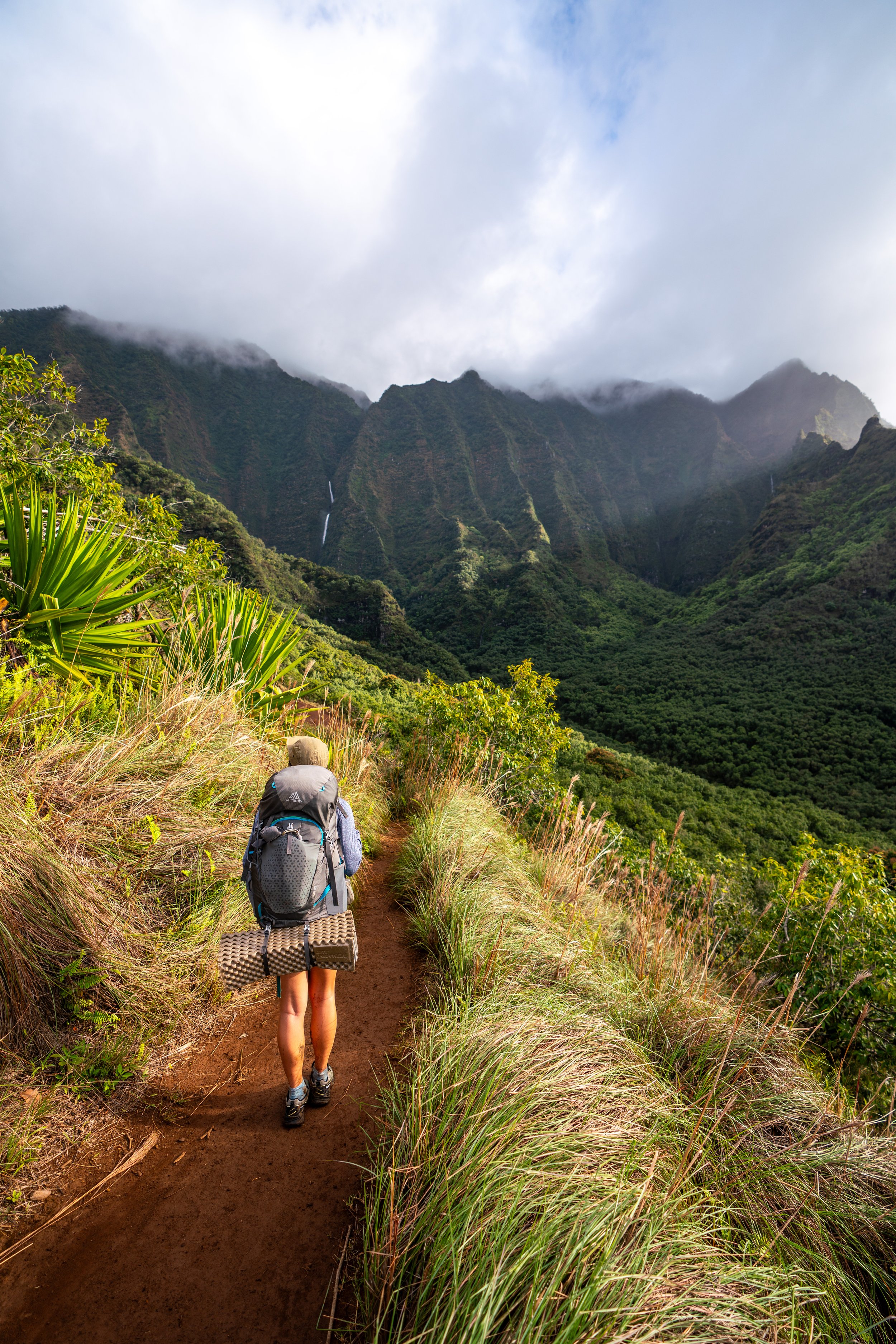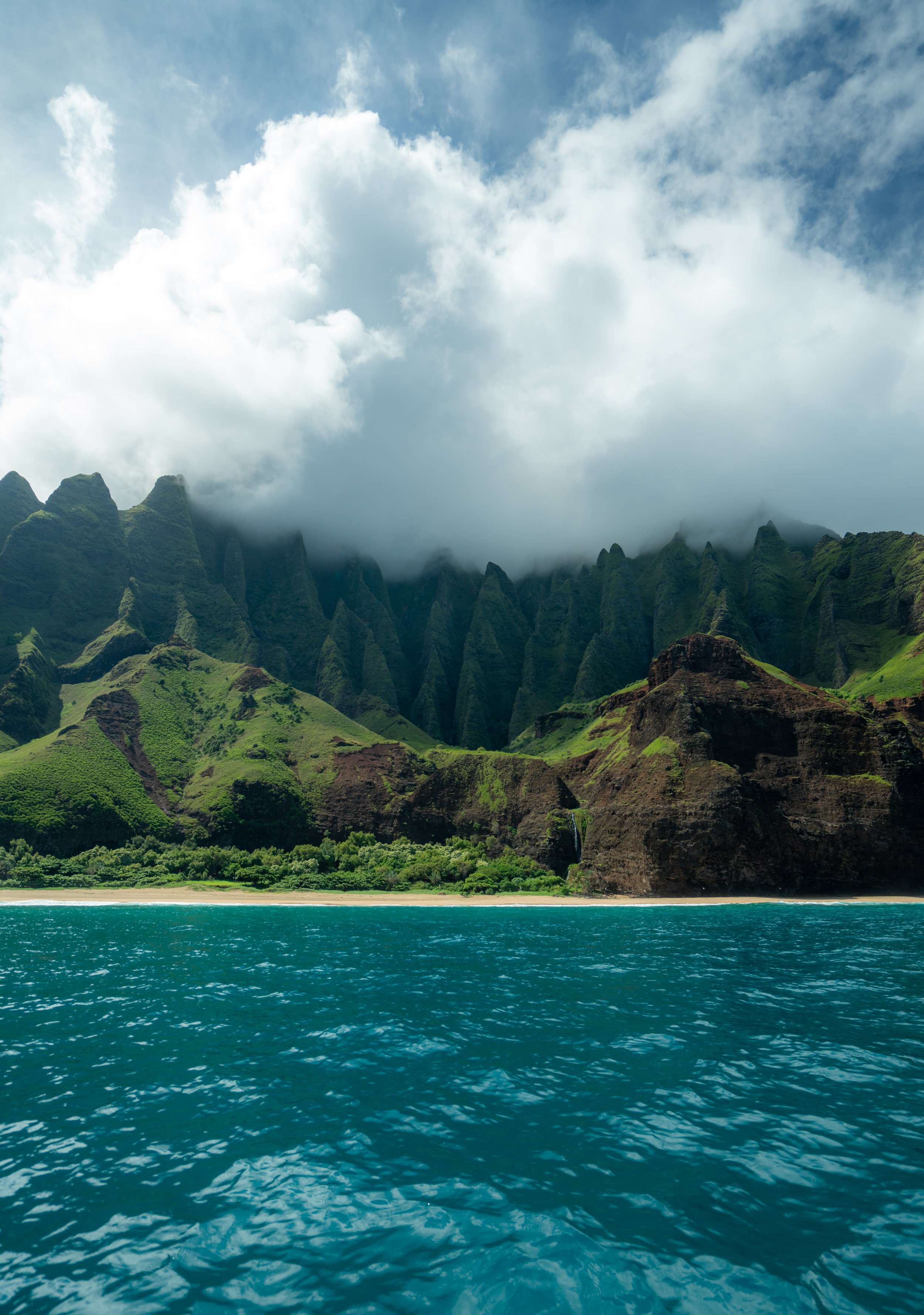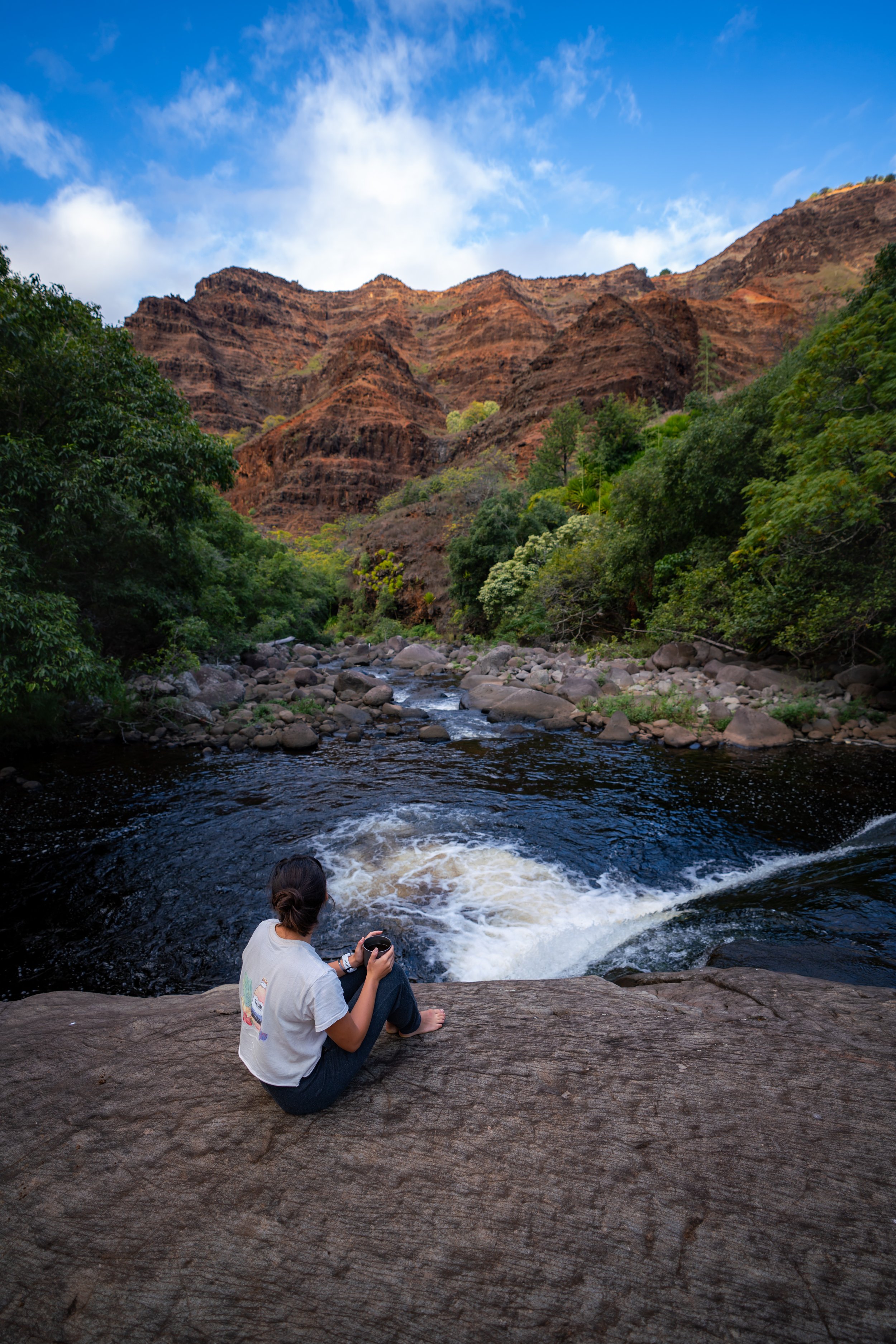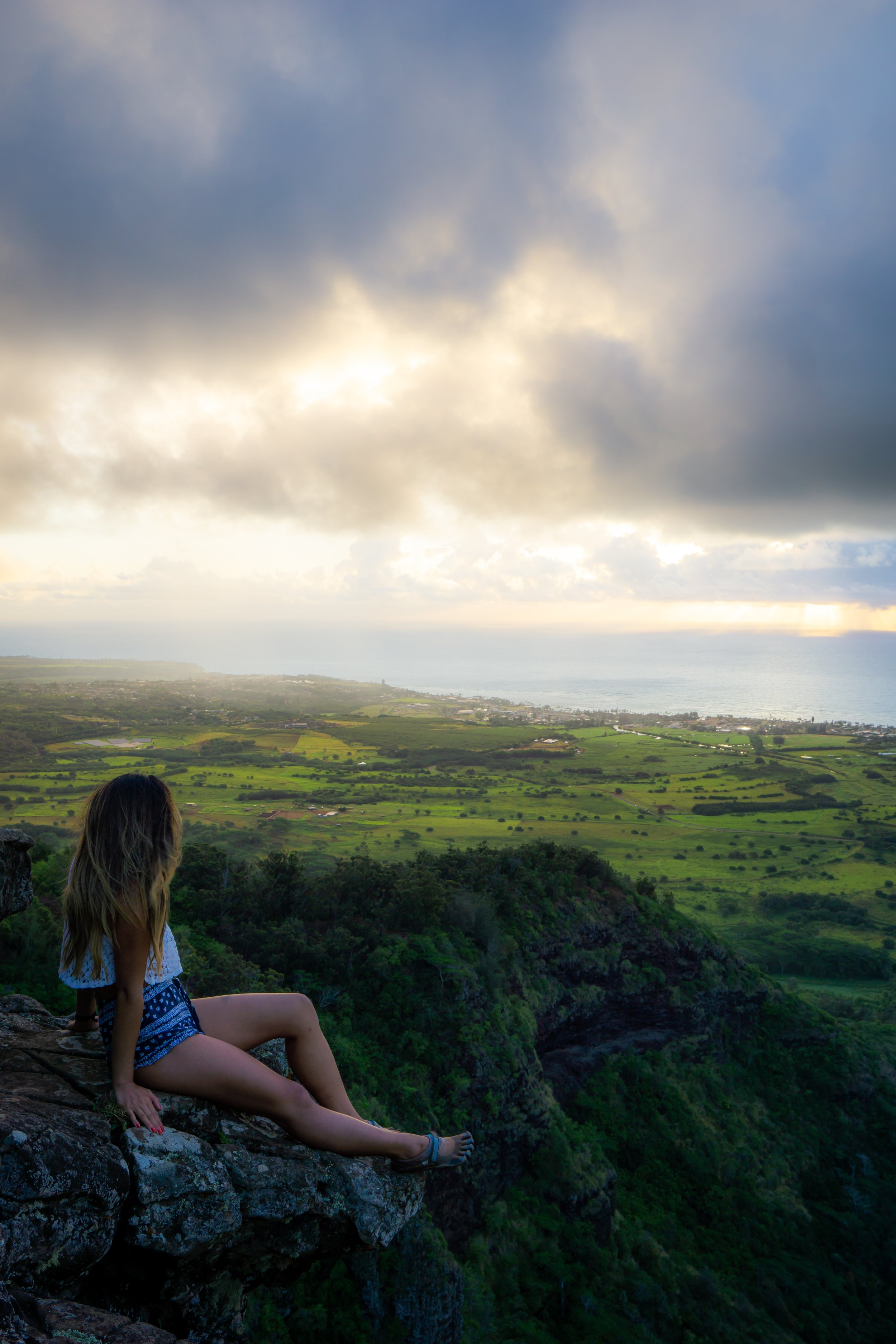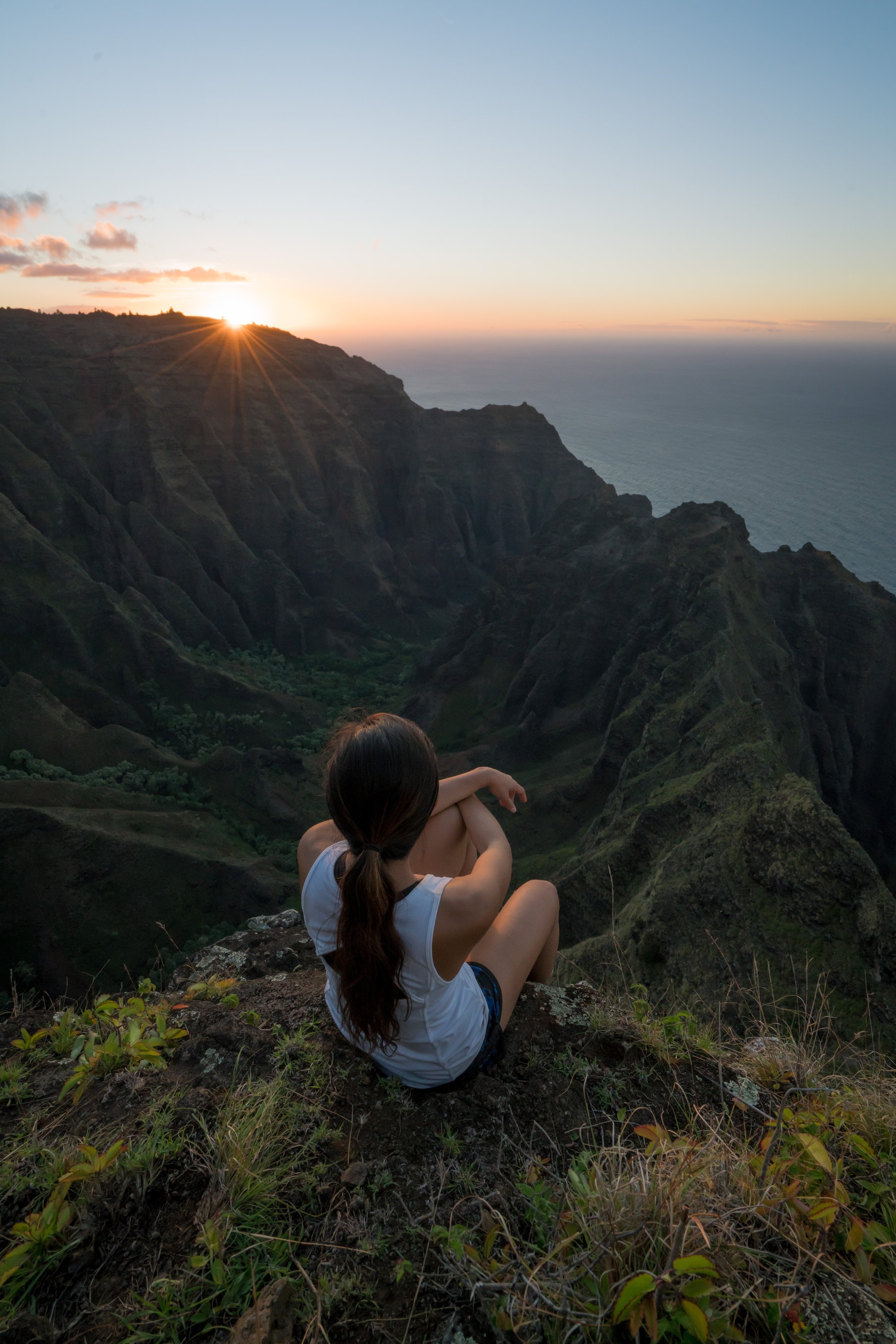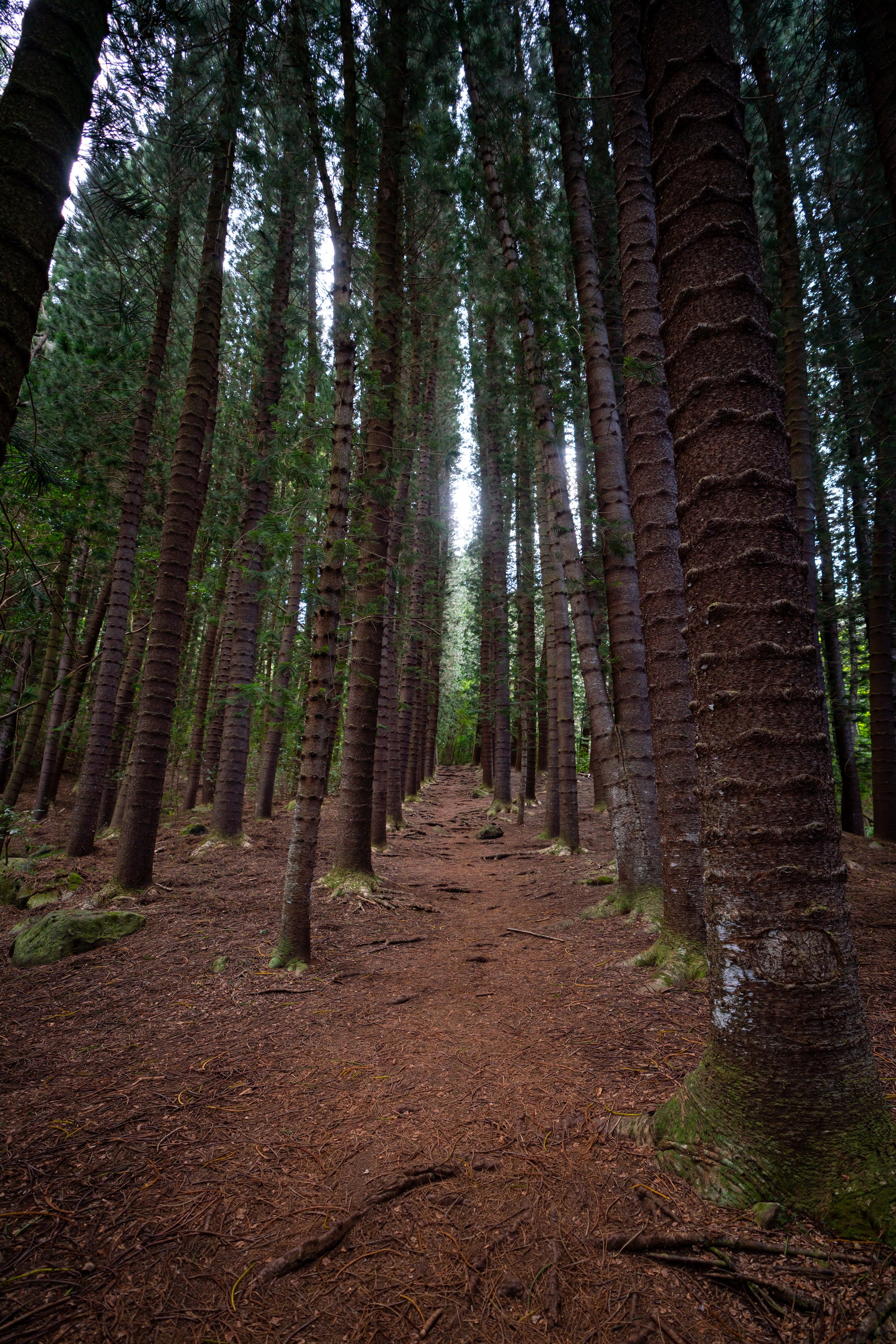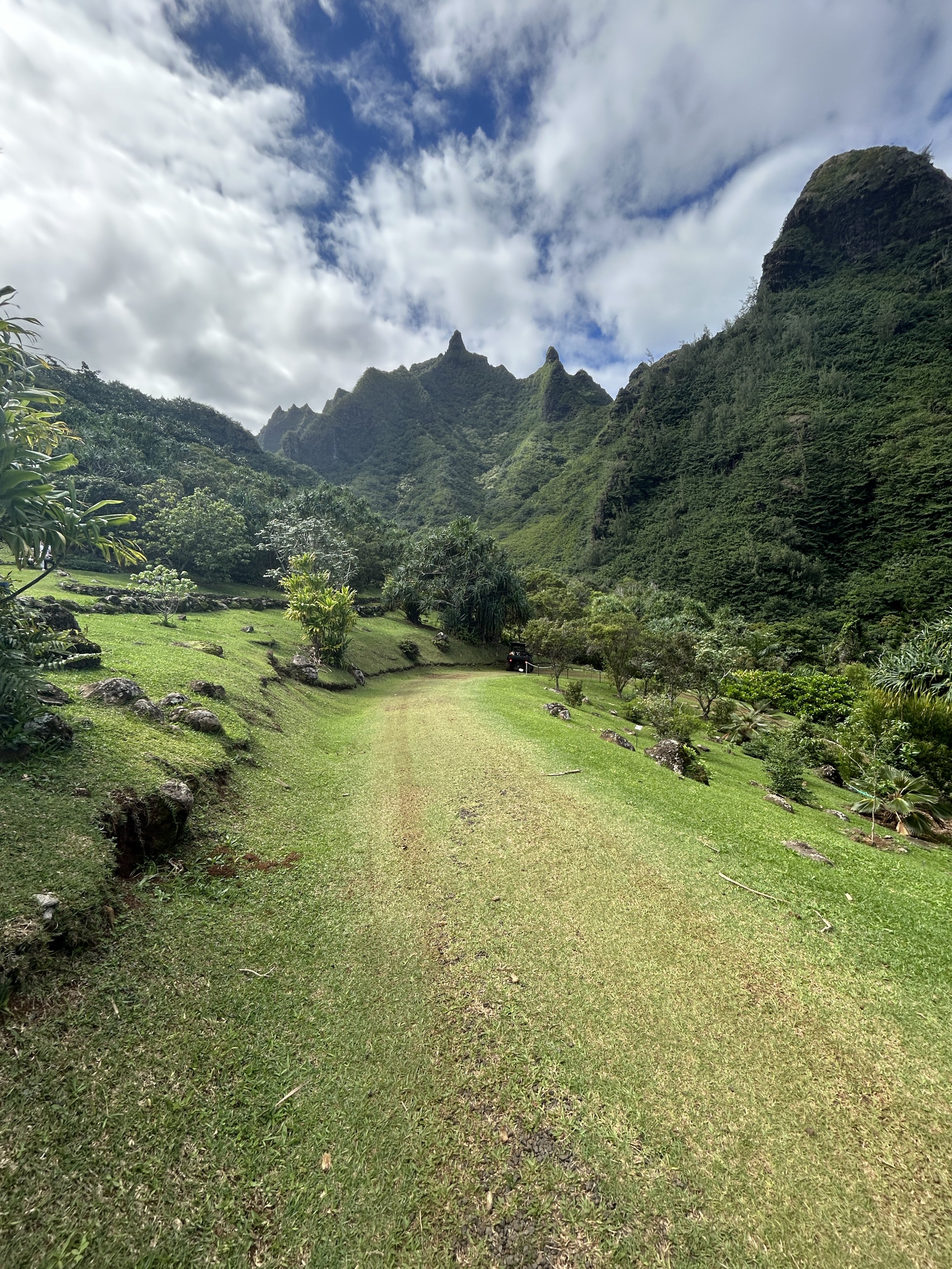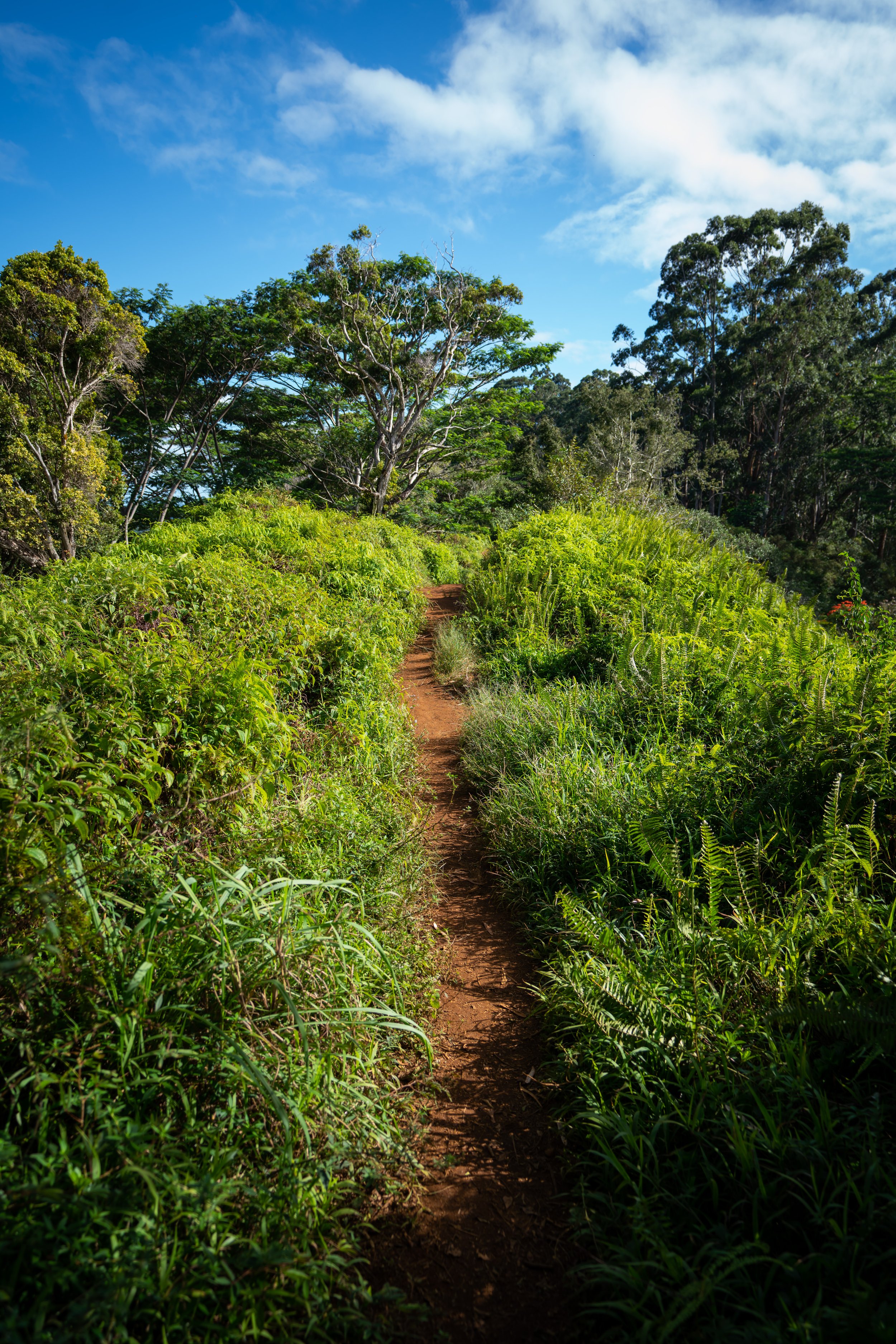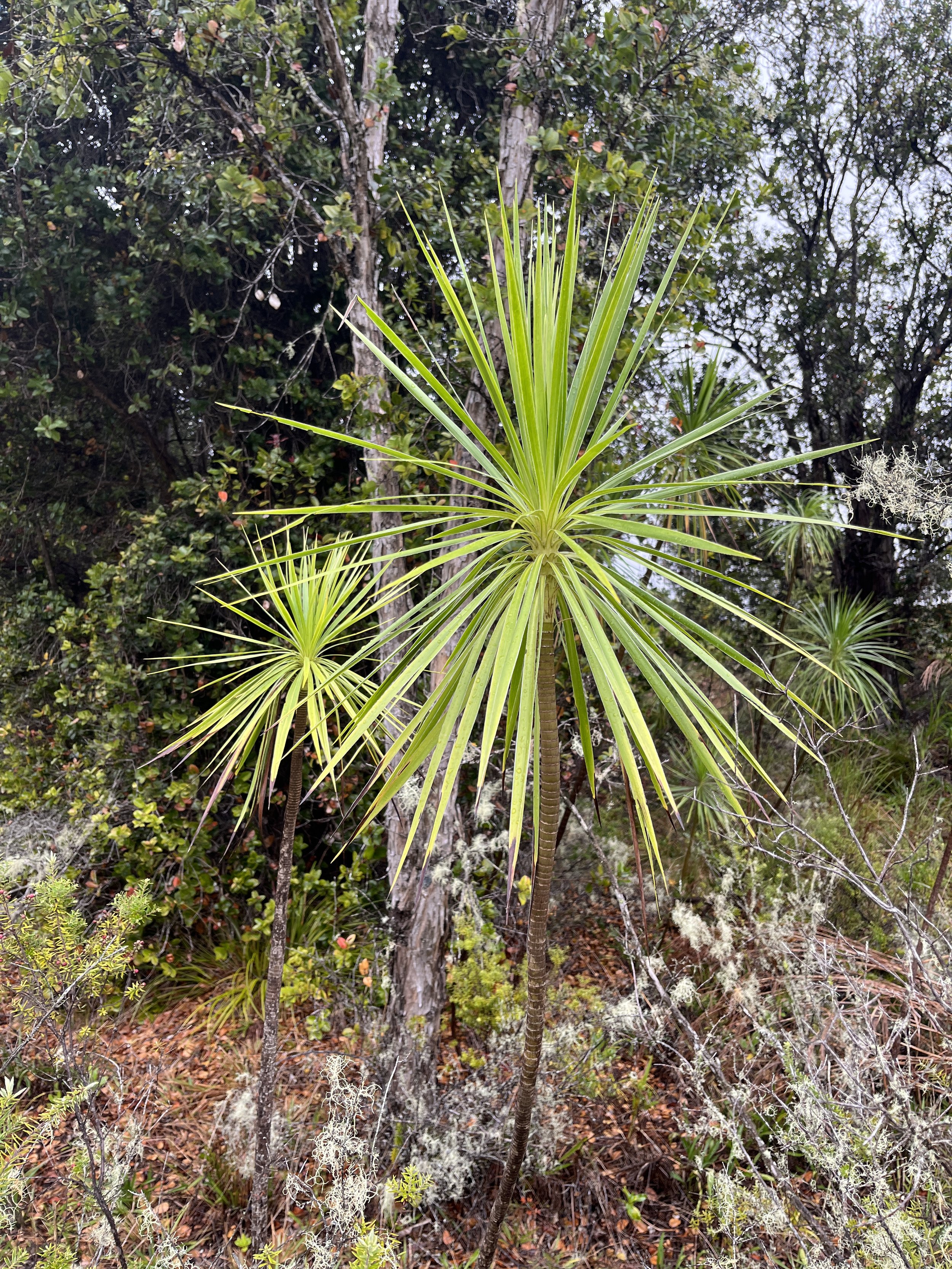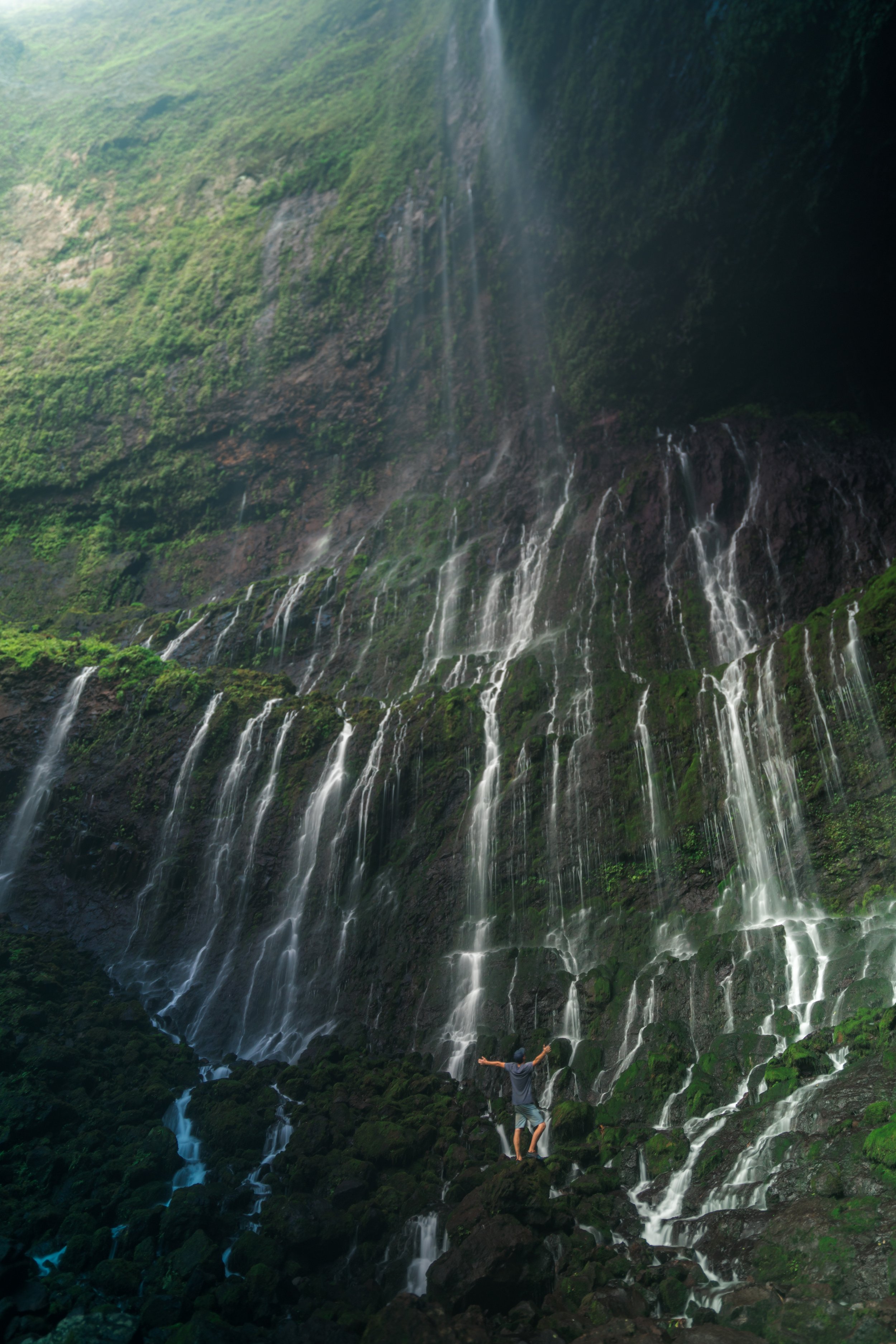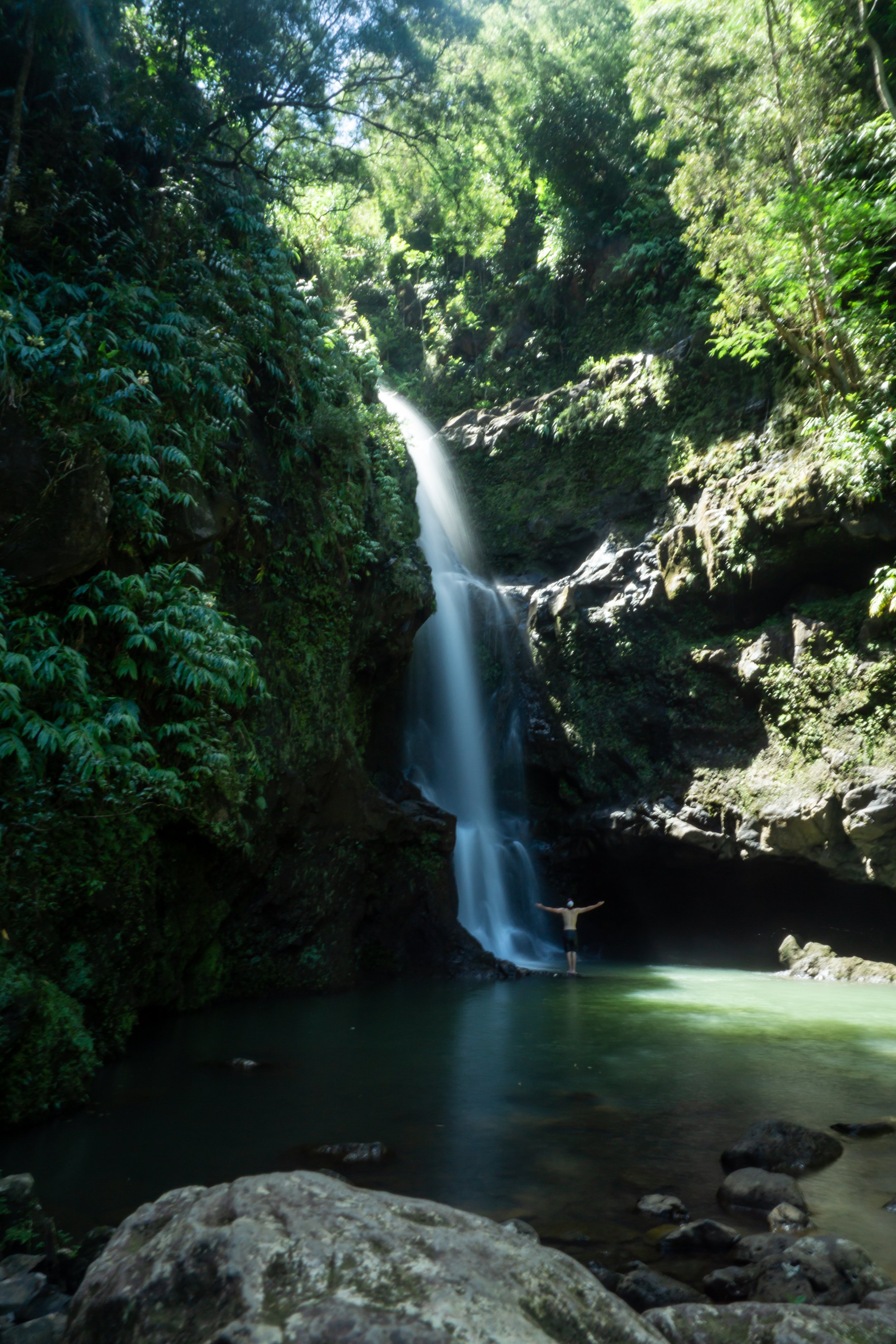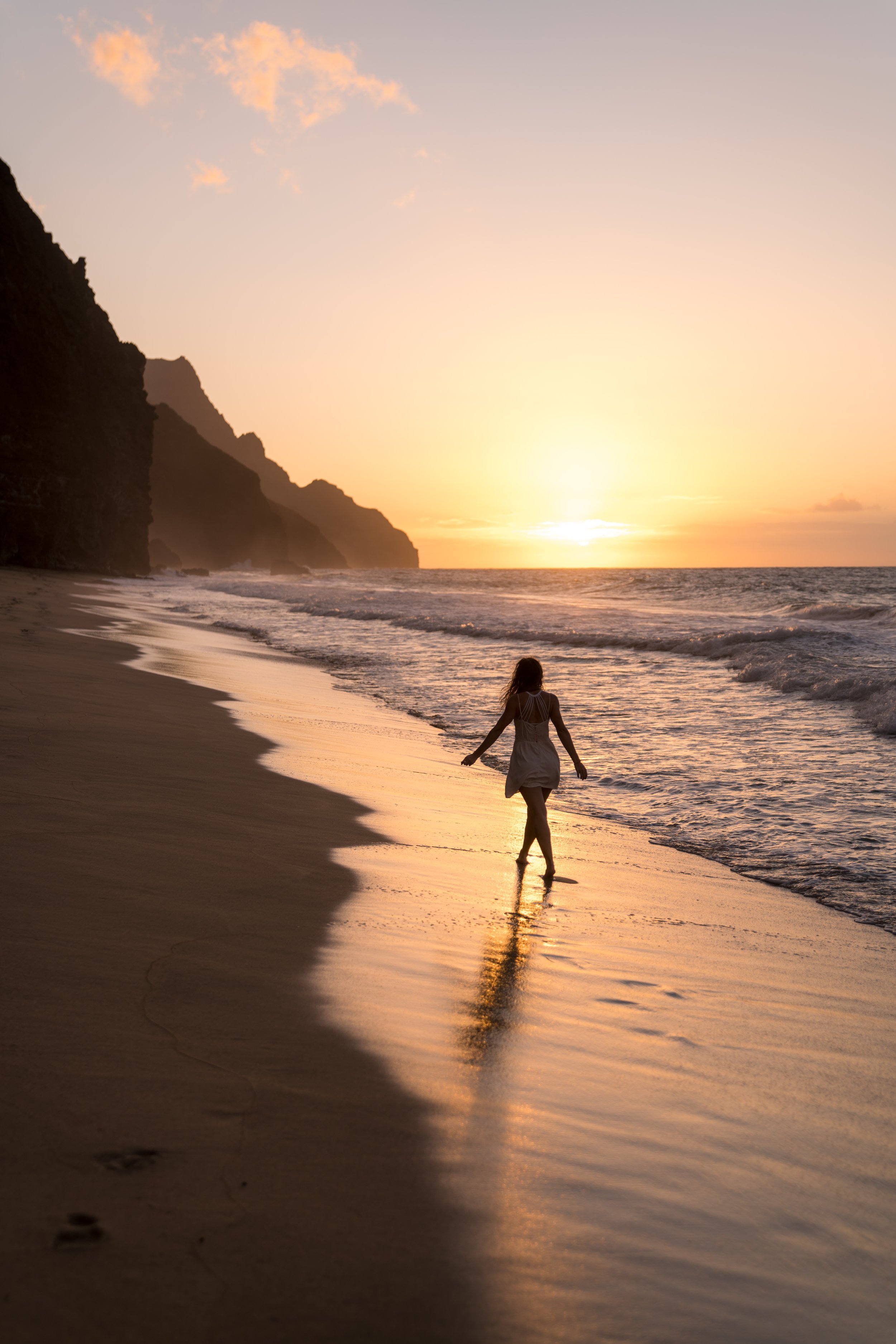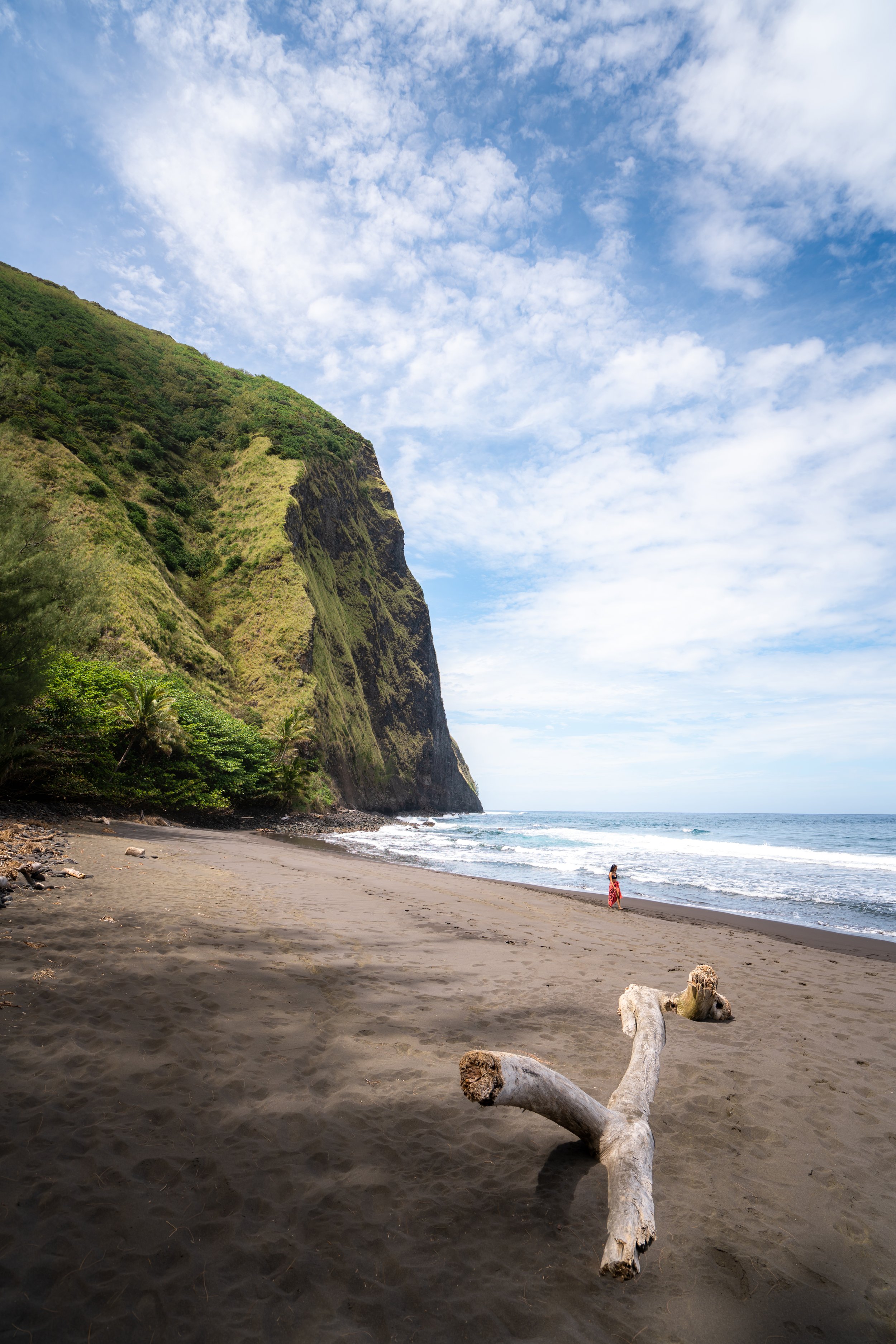Hiking the Hanakāpīʻai Falls Trail on Kauaʻi’s Nāpali Coast
Distance: 8.0 miles / 12.9 km
Located within the first few miles of Kauaʻi’s stunning Nāpali Coast, the Kalalau Trail to Hanakāpīʻai Falls is one of the island’s most beautiful, but also popular, waterfall hikes!
For this reason, planning and making this amazing adventure come to reality has become more and more challenging over the years, especially for out-of-state residents.
That being said, to make all aspects of the trail, the permits, and the parking/ shuttle reservations easily understandable, I highly encourage you to read through all the details in the following sections.
Hāʻena State Park Reservations
Why Are Reservations Required at Hāʻena State Park?
As much as you might think that reservations for Hāʻena State Park are annoying, the State of Hawaiʻi (truly the residents on Kauaʻi) did an amazing job at cleaning up the horrible Hāʻena State Park free-for-all of the past.
By this, I mean that prior to the historic floods in April of 2018, Hāʻena State Park had no limit on the number of people/ cars that could visit each day, meaning the park saw an unrestricted +3,000 visitors per day, essentially making the beautiful Nāpali Coast one of the least-desirable places to visit on Kauaʻi because visiting was such a hassle.
However, after the floods completely cut off Kūhiō Hwy, the community came together and implemented a long overdue Master Plan to make it what it is today, finally prioritizing Hawaiʻi residents!
Who Needs/ What Are the Different Types of Reservations at Hāʻena State Park?
All individuals planning to hike or camp past Hanakāpīʻai Stream on the Kalalau Trail must have an overnight permit through the Department of Land and Natural Resources (DLNR).
Book Here: Nāpali Coast Wilderness State Park Permits
As for parking within Hāʻena State Park, here’s what you need to know: 70 stalls are available for visitor reservations, and 30 stalls are set aside for Hawaiʻi residents.
Hawaiʻi Residents - This is your home, and generally speaking, there should always be a parking spot open for you! Simply show your Hawaiʻi State ID to the folks working as you drive in, and you are free to park and enjoy everything within Hāʻena State Park and the Kalalau Trail, as far as Hanakāpīʻai Falls, without a reservation.
Visitors/ Non-Hawaiʻi Residents - All non-residents wishing to visit Hāʻena State Park/ the Kalalau Trail must have an advanced reservation to either park within the state park or take the shuttle from Hanalei. In summary, advanced parking reservations are extremely competitive and hard to come by, but shuttle reservations from Hanalei are much easier to book closer to the date that you plan to visit.
Note that out-of-state visitors accompanying State of Hawaiʻi residents are not exempt from the entry requirements, and those checking IDs have been known to turn around vehicles with passengers who are out-of-state residents.
Book Here: Hāʻena Advanced Reservations
Waipā Park & Ride - Hāʻena State Park Shuttle Address
5-5631 Kuhio Hwy, Hanalei, HI 96714
Hāʻena State Park (Kalalau Trail) Parking
Parking for the Kalalau Trail (Hanakāpīʻai Falls) is located within Hāʻena State Park at the very end of Kūhiō Hwy on the North Shore of Kauaʻi.
That being said, be sure to read the previous sections in order to come prepared before arriving at Hāʻena.
Additionally, all parking along Kūhiō Hwy prior to Hāʻena State Park is now illegal, which includes Limahuli Valley, even if you have a botanical garden reservation. The only exception to this rule is the Limahuli Stream (Cold Pond), but that is limited to an hour, so that visitors won’t try to park at the stream for the Kalalau Trail.
Finally, parking and walking in from Hāʻena Beach Park is also not allowed.
Moreover, all of these rules are now strictly enforced, so that Hawaiian residents, especially the North Shore community, can avoid the overcrowded and overrun days of the past.
Google Maps Directions: Hāʻena State Park
My Hawaiʻi Hiking Checklist
Osprey 3L Water Bladder - The Osprey 3L water bladder is the most universal hiking and backpacking water bladder on the market, and it’s my go-to because of the slide-off seal that allows it to be quickly filled from the top. Additionally, individual parts are easily replaceable, such as the bite valve.
Blister / Heel Protectors - I swear by these cheap, amazing heel protectors to prevent blisters for nearly every kind of hiking and backpacking that I do!
Black Diamond Headlamp - Personally, I recommend the Black Diamond Storm because it is one of the brightest, lightest, and longest-lasting headlamps on the market—and trust me, the weight-to-battery-life ratio really does matter!
Hiking / Trail Running Shoes - Depending on the type of trail, I prefer to use either the Keen Targhee for longer, more rugged hiking or the HOKA Zinal Trail-Running Shoe for lighter, less intense trails. In either case, both have been amazing to me for many years across countless environments, and both can be found in men’s and women’s sizes. - (Men’s Keen / Women’s Keen) (Men’s HOKA / Women’s HOKA)
Waterproof Rain Shell - You never know when it may rain, and I’ve learned over the years that a rain shell is far better than a rain jacket. By this, I mean that it’s best to have something that the water will roll right off of, which is why I recommend the Patagonia Torrentshell 3L available in both men’s and women’s sizes.
High SPF Sunscreen - Packing high-SPF sunscreen is a must for long days outside!
Hiking the Hanakāpīʻai Falls Trail
Before visiting, be aware that the Hawaiʻi Division of State Parks may close the Kalalau Trail (Nāpali Coast) at any time if conditions are too dangerous at the stream crossings.
I have experienced this before, which is more typical in the wetter winter months.
In any case, the Kalalau Trail begins on a boardwalk through Hāʻena State Park to get to the true trailhead, located shortly ahead.
Hawaiʻi Trail Alerts: Kalalau Trail
Coming from a Hawaiʻi resident, this restoration work is incredible, as opposed to how overrun Hāʻena once was in the past.
Kalalau Trailhead
On the far side of Hāʻena State Park, the true Kalalau Trailhead can be found adjacent to Kēʻē Beach.
From the Kalalau Trailhead, the hike to Hanakāpīʻai Falls begins on the Kalalau Trail for the first 2.0 miles (3.2 km) of the hike.
These first few miles traverse a number of steep elevation changes, as the trail begins climbing high above Kēʻē Beach almost immediately after leaving Hāʻena.
Furthermore, this beginning section of the Kalalau Trail can be very muddy, due in large part to all the foot traffic the Kalalau Trail receives up to Hanakāpīʻai Valley.
The area in the photo below is one of the most iconic views along the Nāpali Coast, and in my opinion, it makes for one of the best places to catch the sunset on a day hike from Hāʻena State Park.
Try to keep moving through these helicopter landing zones, as rescues happen more often than you might think on the popular Hanakāpīʻai Falls Trail.
As the Kalalau Trail nears the 2.0-mile (3.2 km) mark, the trail begins descending back down to sea level where the Hanakāpīʻai Stream is located.
Hanakāpīʻai Stream
The Hanakāpīʻai Stream may be much higher or lower than the photo here, which is what can prompt a trail closure, as previously mentioned.
That being said, the easiest place to cross is generally toward the beach, but there are other places to cross if you don’t mind getting your shoes wet.
On the far side of Hanakāpīʻai, go upstream to find where the Hanakāpīʻai Falls Trail begins.
Hanakāpīʻai Falls-Kalalau Junction
At the Hanakāpīʻai Falls junction, go straight to leave the Kalalau Trail and begin the Hanakāpīʻai Falls Trail.
In my experience, this is where the Kalalau Trail to Hanakāpīʻai Falls begins to see far fewer hikers than the first 2.0 miles (3.2 km) because many only hike the first few miles on the Nāpali Coast to reach Hanakāpīʻai Beach before turning back.
That being said, the beach in Hanakāpīʻai Valley is essentially non-existent during the winter months when the North Shore waves in Hawaiʻi are at their biggest, but even during the calmer summer months, swimming is still strongly advised against, as many people have lost their lives at Hanakāpīʻai Beach for a variety of different reasons, which include the big waves and strong currents.
Read My Separate Post: Kalalau Trail (Nāpali Coast)
After leaving the Kalalau Trail, the Hanakāpīʻai Falls Trail will begin on the right side of the stream, crossing the stream a number of times, as the trail winds its way up the valley.
Second Stream Crossing
Here, the Hanakāpīʻai Falls Trail crosses this small section of the stream before crossing over the larger section immediately following.
Note that this mile marker is only indicating 1.0 miles (1.6 km) from Hanakāpīʻai Beach, not the Kalalau Trailhead.
Third Stream Crossing
In my opinion, the third Hanakāpīʻai Stream crossing tends to be one of the easier ones.
After the 1.5-mile (2.4 km) marker, look for the split in the Hanakāpīʻai Falls Trail as shown below.
Here, it can be easy to go off track by going straight, but the Hanakāpīʻai Falls Trail continues up the hill to the left.
After the hill, Hanakāpīʻai Falls should start to become visible off in the distance.
This is also where you need to be more confident about where you step because the drops on either side of the stream can be dangerous in some sections.
Fourth Stream Crossing
While it may not look like it, this stream crossing tends to be one of the trickier ones, depending on the water level.
You can see one hiker making the big jump in the photo below.
Fifth Stream Crossing
The fifth crossing is the last one before reaching Hanakāpīʻai Falls, located shortly ahead!
Hanakāpīʻai Falls
After about 4.0 miles (6.4 km) of hiking, the Hanakāpīʻai Falls Trail ends at the roughly 300 ft. (91 m) tall Hanakāpīʻai Falls, featuring a large pool at the base that’s really fun to swim in if you can handle cold stream water!
Warning
Rock falls at waterfalls, like Hanakāpīʻai, can and do occur, and I witnessed one that nearly struck someone swimming in the Hanakāpīʻai Falls pool that easily would have taken a life.
This is all to say that places such as Hanakāpīʻai Falls are fun to visit, but I call it borrowing your time whenever you venture up a Hawaiʻi gulch, as rockfall and flash floods pose the greatest risk. I have unfortunately experienced both.
Kalalau Permit Zone
For those who are curious, the remaining 9.0 miles (14.5 km) of the Kalalau Trail past Hanakāpīʻai Stream is accessible by permit only.
That being said, the Department of Land and Natural Resources does enforce this at random, even for day hikers.
Book Here: Nāpali Coast Wilderness State Park Permits
What Happens If You Get Caught Without a Permit on the Kalalau Trail?
The Kalalau Trail within Hāʻena and the Nāpali Coast Wilderness State Park is one of the most heavily enforced trails in the State of Hawaiʻi.
That being said, getting caught past the Hanakāpīʻai Stream without a permit will result in a steep fine, a mandatory court appearance (factor in travel expenses if you are not from Kauaʻi), and if you elect to have an attorney represent you instead of your appearance, then factor in lawyer fees.
Furthermore, it’s pretty obvious who has a permit on the trail and who does not, but what I can say from a local’s perspective is that there are very obvious points in the trail where enforcement is likely, should the officers choose to be out on the trail that day.
Are There Bathrooms on the Hanakāpīʻai Falls Trail?
Yes, there are bathrooms throughout the Kalalau Trail, but specifically for Hanakāpīʻai Falls, there are bathrooms at both the Hāʻena State Park Trailhead and the first Hanakāpīʻai Stream crossing.
Native Plants on the Nāpali Coast
Unfortunately, the Kalalau Trail is a heavily-invaded trail, with non-native/ invasive species spread throughout by the amount of foot traffic that the trail sees.
However, the Kalalau Trail is still a great place to see a variety of native Hawaiian plants, from the trailhead within Hāʻena State Park to Hanakāpīʻai Falls. Some of these include ʻŌhiʻa lehua, Koa, Alaheʻe, Lama, Hala, Palaʻā, Naupaka, Hōʻawa, Kāwelu, Palapalai, and Kokolau, to truly only name a few.
If you would like to know more about these and tons of other native Hawaiian plants from across the islands, I encourage you to check out my separate post linked below.
Read My Separate Post: Native Hawaiian Plant Guide
More Kauaʻi Adventures
If you’re interested in reading about some more amazing Kauaʻi adventures, check out my separate posts below!
Best Hotels & Vacation Rentals on Kauaʻi
Since the best things to do on Kauaʻi are located on all different sides of the island, I recommend starting your search on VRBO.
You may want to stay some nights in Poʻipū, some nights in Kapaʻa, and even some nights on the beautiful North Shore, but this way you can plan out places to stay and adventures on all different sides of the island!
Best Way to Book Rental Cars!
I travel quite a bit, and I know firsthand that finding a good rental car deal can be a challenge, but that’s why I recommend comparing all of your options with Discover Cars.
In short, Discover Cars is a well-known, reputable business that allows you to search for the best deal across companies, and they have the best full-refund cancellation policy I’ve ever seen, valid up to 72, or sometimes even 48, hours prior to your reservation!
Book Here: Discover Cars
Visiting Other Islands
If you are visiting Kauaʻi or heading to another island, check out some of my personal recommendations for Oʻahu, Maui, Kauaʻi, Molokai, Lānaʻi, and Hawaiʻi Island (Big Island) in these separate posts.
If you’re trying to decide which island is right for your visit, check out my overview about each island in the post below.
Read My Separate Post: What is the Best Hawaiian Island to Visit?
What is the Best Time of Year to Visit Hawaiʻi?
The weather in Hawaiʻi can often appear to be warm and beautiful throughout the year, but in my experience, there is a lot more to consider when planning what time of year to visit the islands, such as what island you are considering, what sides of each island do you plan to stay, what activities are you most interested in, the wildlife, and countless other nuanced variables that can all impact the type of trip you can expect to have.
For these reasons, I highly recommend reading through my separate article to not only understand my thoughts regarding the best time of year to come to Hawaiʻi but also what you need to consider based on the time of year that you plan to visit.
Read My Separate Post: What is the Best Time of Year to Visit Hawaiʻi?
Safety
All hikes in Hawaiʻi should not be compared to trails outside of the islands, and hikers should exercise due caution on every adventure, given that many are extremely dangerous.
By this, I mean that Hawaiʻi is known for hot, humid weather, steep, dramatic, and unstable cliffs, and flash floods, which can occur without warning. Therefore, it is important that you check the local forecast, understand the physical condition of your entire group, and pack sufficient food and water before attempting any adventure.
Disclaimer
All information provided on this blog is for informational purposes only and is not intended to be a substitute for information or advice from qualified professionals or managing agencies.
Noah Lang Photography LLC makes no representations or warranties regarding the accuracy or completeness of the information provided here, and readers should use their own discretion, judgement, and seek professional advice where it is appropriate.
Furthermore, Noah Lang Photography LLC shall not be held responsible for any injuries, lost individuals, or legal issues arising from the use of information provided on this website, and if applicable, the above safety disclaimer should be referenced to provide a generic overview of the risks involved.
All said, the content on this blog is for the sole use of Noah Lang Photography LLC, and unauthorized use or reproduction of this content is strictly prohibited.
Disclosure
This post is not sponsored.
However, some of the links in this post are affiliate links, which means that I may earn a small commission if a purchase is made through one of those links. This commission comes at no additional cost to you, and I only recommend products that I personally use and believe will add value to my readers. Thank you for your support, which enables me to continue creating more!
To read the full privacy policy, click here.

About This Blog
Noah Lang Photography, also known as @noahawaii, is 100% reader-supported!
I do not accept guest articles or sponsored content of any kind on my blog, which is why, if you enjoy the outdoor and travel content I create, please consider buying me a coffee!
I appreciate your support, which helps me continue to keep this blog alive!











